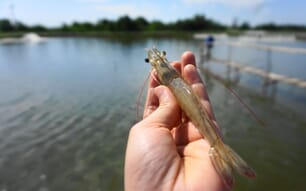The completion of the study signifies a milestone in a multi-phase project that began in December 2017 when GAA was awarded a $435,000 grant from the Open Philanthropy Project.
For this phase of the project, University of Stirling researchers reviewed existing best practices in animal welfare in aquaculture, focusing on salmon as a model species. Called “Farmed Fish Welfare Practices: Salmon Farming as a Case Study” and authored by Sonia Rey, David Little and Maureen Ellis, the study looked at the factors that lead to poor animal welfare, including stocking density, water flow, water quality, vaccination and grading, handling, transport, parasites and diseases, and humane slaughter.
Researchers then identified key operating indicators (KOIs) in farmed salmon and compared them to KOIs for other farmed seafood species to determine if best practices in animal welfare in salmon could be applied to tilapia and catfish.
“Consumers are starting to demand more from their seafood, and the message is very clear that animal health and welfare is one of the issues they are thinking about. They want to know that the animals have been well cared for and treated humanely,” said GAA VP Steve Hart, who managed the project at the outset. “We undertook this project with the University of Stirling so we could evaluate our Best Aquaculture Practices (BAP) farmed salmon standards as well as our other BAP standards to find ways to improve them.”
Now that the results of the study have been published, the next phase of the project is to incorporate elements of the project into BAP standards and to develop online educational content to provide best practices training to aquaculture and seafood professionals. Existing best practices in animal welfare in tilapia and catfish were evaluated as part of a study that concluded in October 2018.
Animal welfare is already a pillar of the industry-leading BAP third-party certification program, along with environmental responsibility, social accountability and food safety. There are six sets of BAP standards — salmon farms, finfish and crustacean farms, mollusc farms, hatcheries and nurseries, feed mills and seafood processing plants.
The 56-page “Farmed Fish Welfare Practices: Salmon Farming as a Case Study” report as well as Annex 1 and Annex 2 of the report are available to the public.




